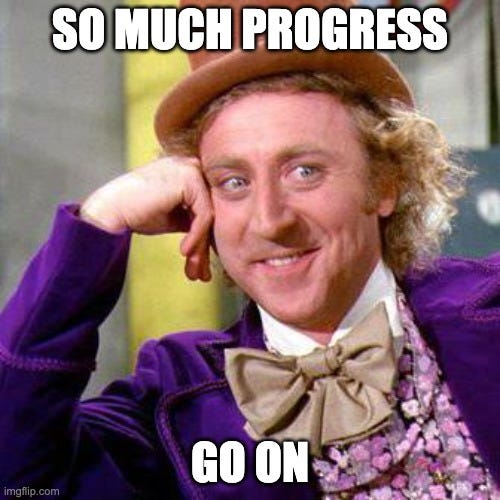Modern, Western scientists tend to misunderstand ourselves, and be misunderstood by the public we ostensibly serve, as somehow existing outside of culture — having progressed beyond traditional societies whose wisdom about many relevant problems (like what to eat to be healthy, and how to feed babies in order to keep them alive) has largely been lost. But we’re in the cultural soup just like everyone has always been, forgotten historical knowledge is not necessarily lost for good, and we can take heart that, though we can’t replace imperfect, biased science with perfect, neutral science (which doesn’t exist), we can debunk modern myths such as those surrounding abortion, and replace them with better science and more informed consent that may save lives.
Welcome to Pseudoscience Swamp, Population 8 Billion
As I’ve written previously, modern societies have grown so complex, so quickly, that bad science links diverse crises that divide and conquer activists who tend to not recognize that we’re all working on different facets of the mother of all collective action problems — spin science on so many different fronts that it seems we must (as ninja nerds) choose our own rabbit holes to dive down, to suss out what the evidence actually says — as opposed to what everybody else says it says — and try to tell the others. These fronts include many problems of myth-based medicine, along with other science policy screw-ups. The late modern, Western invention of “exclusive breastfeeding” is another case study I’ve published on recently, showing that common and preventable harm to newborns results from historical ignorance, bad science, and denying mothers’ lived experiences; my ongoing research also looks at possible harm to mothers from this paradigm, including postpartum mental illness and breast cancer risk. A second case study I’ve also written about recently is how seemingly credible, mainstream medical sources misrepresent and downplay the risks of preventable harm to children from antidepressants in pregnancy. Abortion sits alongside these cases in part of the swamp that extends from women’s health to possible developmental risks to children from their mothers’ medical choices.
Since all cases provide views into how we can hurt some of the most vulnerable people in society while trying (assuming good intent) to help them, it’s worth centering the idea that we can tend to view science as a secular religion — forgetting that it’s done by human beings with perspectives, embedded in webs of power that shape how we see, incentivize what we do, and privilege certain stories over others, even in statistics. So we should be wary, in science reform projects like this one, of making the usual mistakes religious reformers make.
Dogmatism is one; this is why I emphasize that we can’t exit the regress of constructing reality from our own subjectivity as we do science. Even with all the best new tools, I’m still drawing with my own two hands. All we have to do is use these tools to do better — in combination with other methods (triangulation) — and that’s an attainable, imperfect goal that I think it’s worth saying how to work towards. We’re stuck in the swamp, but we can build better huts on poles here.
Hubris is another classic religious reformer mistake. In this case, I think it means we should avoid over-stating the centrality of science. It may be that traditional societies had a similar sort of safety infrastructure surrounding abortion that I’ve argued they had around breastfeeding before modern societies accidentally destroyed it. In the Human Relations Area Files, a database of world cultures, for instance, there’s some evidence for this possibility. The issues are incidence and norms. The incidence of abortion today is almost certainly higher than it was in traditional societies, but sharply declined recently — with around 43% of U.S. women having had at least one abortion 25 years ago, versus around 24% in 2008-2014. Except where restrictions apply, there are norms that say abortion is a woman’s right; this is historically unprecedented.
In traditional societies, it seems to me so far that abortion tended instead to be a last resort reserved for special cases. For example, Smith 1954 said the Hausa, a subsistence combination society of Western Africa, had “a medicine to make the pregnancy ‘go to sleep,’ but that is not a good thing.” It could be used to protect a suckling from a new pregnancy drying up a mother’s milk when a couple failed to observe the two-year taboo against postpartum sex. Maquet 1961 said the Rwandans, an Agro-Pastoralist society of Central Africa, had an abortifacent herb known as umuhoko “used sometimes by pregnant unmarried girls with the help of their mother.” Normalizing abortion as a form of birth control — within a highly rational, planning and multi-party consent-based perspective on famiilies — seems to be a uniquely modern, Western idea.
At the same time, questions about how to balance protecting some women from possible abortion harms, and others against the harms of continuing unwanted pregnancies, are not necessarily questions for science. Value pluralism, in which first principles conflict, requires ethical winners and losers. We can and should bring our values to the table when we do science, for instance, by upholding laws protecting human subjects in research. But we can not claim to solve difficult ethical dilemmas for people who disagree; politics involves conflict, and science is not conflict resolution. We have to tell the truth — especially to vulnerable people who depend on us for it.
This is where leading experts fail pregnant women, telling stories that privilege the narratives preferred by powerful social networks. It wouldn’t be that hard to do better. So they should.
The really hard problem is prioritizing which ones of an unsolveably large number of problems like this one to prioritize. Improvement is easy; mapping the swamp is hard.



